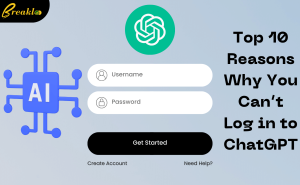Introduction: Why Staying Updated with Digital Marketing Trends is Crucial in 2024
The digital marketing landscape is in a continuous state of flux, driven by technological advances, shifting consumer behaviors, and changes in privacy regulations. Digital Marketing Trends In 2024 For businesses to remain competitive, it’s essential to stay on top of these changes and adapt their marketing strategies accordingly.
2024 is a transformative year for digital marketing, where personalization, data privacy, AI-powered tools, and platform innovations are taking center stage. By leveraging the most relevant trends, businesses can create more personalized, engaging, and effective marketing strategies that resonate with modern consumers.
In this article, we explore the top digital marketing trends of 2024, their impact on businesses, and practical ways to implement them in your marketing campaigns.
1. First-Party and Zero-Party Data: Privacy-First Marketing
One of the most significant shifts in digital marketing over recent years has been the emphasis on data privacy. With the phasing out of third-party cookies and increasing consumer awareness of data security, 2024 sees a move towards leveraging first-party and zero-party data.
- First-party data refers to the information that businesses collect directly from their customers through website interactions, purchase history, and other engagements.
- Zero-party data includes data that customers willingly provide, such as preferences, feedback, and interests shared through surveys, forms, and quizzes.
Why This Matters:
Consumers are more cautious about sharing their personal information, so businesses must adopt a transparent, privacy-focused approach to data collection. By gathering first-party and zero-party data, companies can provide tailored experiences without infringing on privacy concerns. This shift also empowers businesses to create personalized marketing campaigns, leading to higher engagement, loyalty, and trust from customers.
How to Implement:
- Develop interactive quizzes, surveys, and preference centers where customers can voluntarily share information.
- Use CRM systems to manage and analyze first-party data, ensuring your marketing messages are relevant and personalized.
- Focus on transparency by clearly communicating how customer data will be used and offering easy opt-out options.
2. Hyper-Personalization: Moving Beyond Basic Customization
As consumers become more accustomed to personalized marketing, the bar for relevance is constantly rising. Hyper-personalization involves using real-time data, AI, and machine learning to deliver messages and content tailored to the individual’s specific behaviors, needs, and preferences.
This trend goes beyond traditional personalization, such as addressing customers by their first name in an email. In 2024, brands must go deeper, creating customized experiences based on a comprehensive understanding of each customer’s journey.
Why This Matters:
Customers expect tailored experiences. A Salesforce study revealed that 84% of customers say being treated like a person, not a number, is crucial to winning their business. Brands that excel in hyper-personalization can create stronger emotional connections with their audience, resulting in improved customer retention and increased lifetime value.
How to Implement:
- Leverage AI-powered tools like chatbots and recommendation engines to deliver highly personalized content in real time.
- Use data from various touchpoints, such as browsing history, social media interactions, and past purchases, to create dynamic, customized offers for each customer.
- Incorporate predictive analytics to anticipate customer needs and deliver targeted recommendations before they even know they want them.
3. Social Media Evolution: New Platforms, New Opportunities
Social media continues to be a vital channel for engaging customers, but the platforms themselves are constantly evolving. In 2024, platforms like Instagram, TikTok, and LinkedIn are introducing new features that allow businesses to connect with their audiences in more meaningful ways.
- Instagram Reminder Ads enable businesses to promote upcoming events and product launches directly to users, allowing them to set reminders for important dates.
- Meta Threads facilitates private conversations and fosters stronger community-building opportunities for brands looking to engage with smaller, more intimate groups of followers.
Why This Matters:
With new features and platform updates, businesses have fresh opportunities to reach their audience in innovative ways. These changes make it easier to engage consumers with real-time content, whether it’s a new product launch or a live event.
How to Implement:
- Take advantage of Instagram’s Reminder Ads to build anticipation for upcoming product launches or events.
- Use Meta Threads to foster more personal, one-on-one conversations with your audience, building stronger community engagement.
- Stay on top of platform updates and incorporate new features as they become available to ensure your social media strategy remains dynamic and fresh.
4. The Shift to Video Marketing: Short-Form Content and User-Generated Content
Video marketing remains a powerful tool in the digital marketer’s arsenal, but in 2024, short-form video content and user-generated content (UGC) are the most impactful formats.
Platforms like TikTok, Instagram Reels, and YouTube Shorts dominate the video landscape, with consumers gravitating toward bite-sized content that delivers value quickly and succinctly.
Moreover, user-generated content continues to rise in importance, as consumers trust authentic, peer-generated content more than branded advertisements. Encouraging your customers to create and share their experiences with your brand helps build credibility and fosters a sense of community around your product or service.
Why This Matters:
Short-form videos are incredibly effective at capturing attention, and UGC adds a layer of authenticity that traditional ads often lack. Combining the two creates a powerful marketing strategy that engages users, increases social proof, and encourages organic brand advocacy.
How to Implement:
- Create 15 to 30-second video ads for platforms like TikTok and Instagram Reels, focusing on clear, concise messaging that grabs attention quickly.
- Encourage customers to create and share their own content using branded hashtags or by running UGC campaigns that reward participants with discounts or shoutouts.
- Collaborate with influencers, particularly nano- and micro-influencers, who can help amplify your brand’s message to highly engaged niche audiences.
5. AI and Machine Learning: Automating and Enhancing Marketing
The role of artificial intelligence (AI) and machine learning in digital marketing has grown exponentially, and in 2024, it’s becoming indispensable. From automating customer service through AI-powered chatbots to using predictive analytics to forecast consumer behavior, AI is helping businesses become more efficient and effective.
AI tools can optimize a variety of marketing functions, including content creation, email marketing, and ad targeting, allowing businesses to deliver highly relevant, timely messages with minimal manual effort.
Why This Matters:
AI-driven marketing not only saves time but also allows businesses to make smarter, data-driven decisions. By leveraging machine learning algorithms, brands can predict customer behaviors, automate tasks, and improve overall campaign performance.
How to Implement:
- Use AI chatbots to handle routine customer inquiries and provide instant support, improving customer experience and freeing up your team for more complex tasks.
- Implement predictive analytics tools to forecast customer needs and behavior, enabling you to stay one step ahead in your marketing strategies.
- Utilize AI-powered content tools to streamline the creation of personalized email campaigns, product recommendations, and dynamic ads.
6. Connected TV (CTV) Advertising: The New Frontier
As streaming services continue to grow in popularity, Connected TV (CTV) advertising is becoming an essential component of digital marketing strategies. CTV ads allow brands to target viewers watching content on streaming platforms like Hulu, Roku, and Amazon Fire TV, providing a full-screen, non-skippable ad experience.
Unlike traditional TV ads, CTV advertising offers advanced targeting capabilities, enabling businesses to reach specific demographics based on location, interests, and viewing habits.
Why This Matters:
CTV advertising combines the broad reach of television with the precision of digital marketing. This makes it an effective tool for reaching highly engaged audiences who are actively consuming content, resulting in higher ad viewability and better ROI.
How to Implement:
- Start by testing small CTV campaigns to see how they resonate with your audience. Platforms like Google Ads now offer CTV ad options that are easy to integrate into your existing marketing efforts.
- Leverage the targeting capabilities of CTV ads to ensure you’re reaching the right audience, focusing on their specific interests and behaviors.
7. Voice Search Optimization: Preparing for the Future of Search
The use of voice search is growing rapidly, thanks to the proliferation of voice assistants like Amazon Alexa, Google Assistant, and Apple Siri. In 2024, optimizing for voice search will become increasingly important as more consumers use this hands-free method to find information, make purchases, and interact with brands.
Voice searches tend to be more conversational and often involve long-tail keywords. This means businesses must adapt their SEO strategies to ensure they appear in these search results.
Why This Matters:
Optimizing for voice search not only improves your visibility in search results but also helps you stay ahead of the curve as consumer behavior continues to shift toward voice-activated devices.
How to Implement:
- Focus on long-tail keywords and conversational phrases when creating content, ensuring that your website answers common voice search queries directly.
- Optimize your website for local search since many voice searches are location-based, such as “Where is the nearest restaurant?”
- Incorporate structured data into your website’s code to help search engines better understand and surface your content for voice queries.
Conclusion: Embrace the Future of Digital Marketing
Digital marketing in 2024 presents both exciting opportunities and new challenges for businesses. By embracing trends like hyper-personalization, AI-powered marketing, privacy-first strategies, and voice search optimization, businesses can stay ahead of the competition and build stronger, more meaningful connections with their audiences.
To thrive in this ever-evolving landscape, it’s essential to stay flexible, experiment with new tools and platforms, and continuously refine your strategies based on data and consumer feedback.
By adopting these trends into your 2024 digital marketing strategy, you’ll not only enhance your brand’s visibility but also create a more engaging, personalized experience for your customers.



